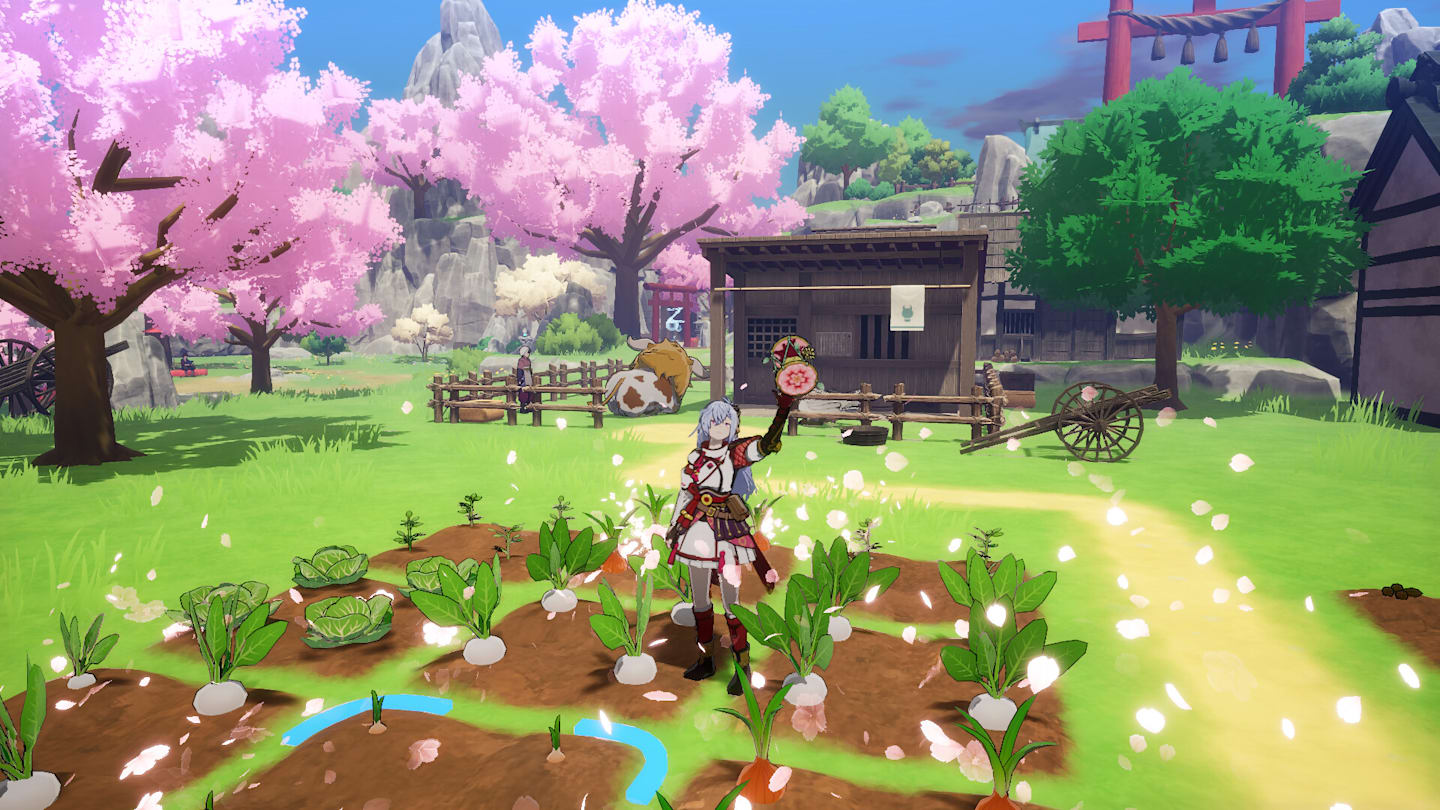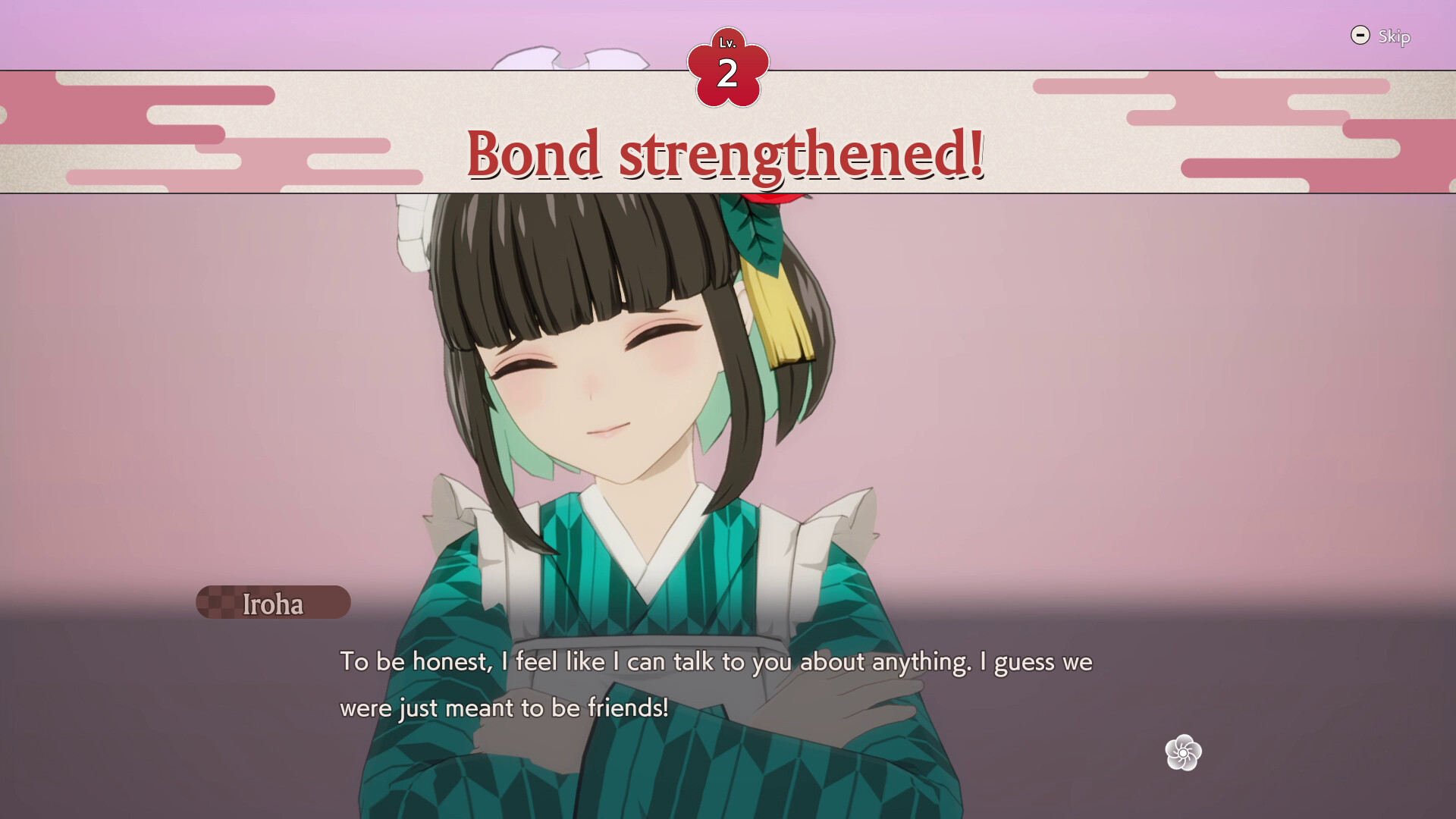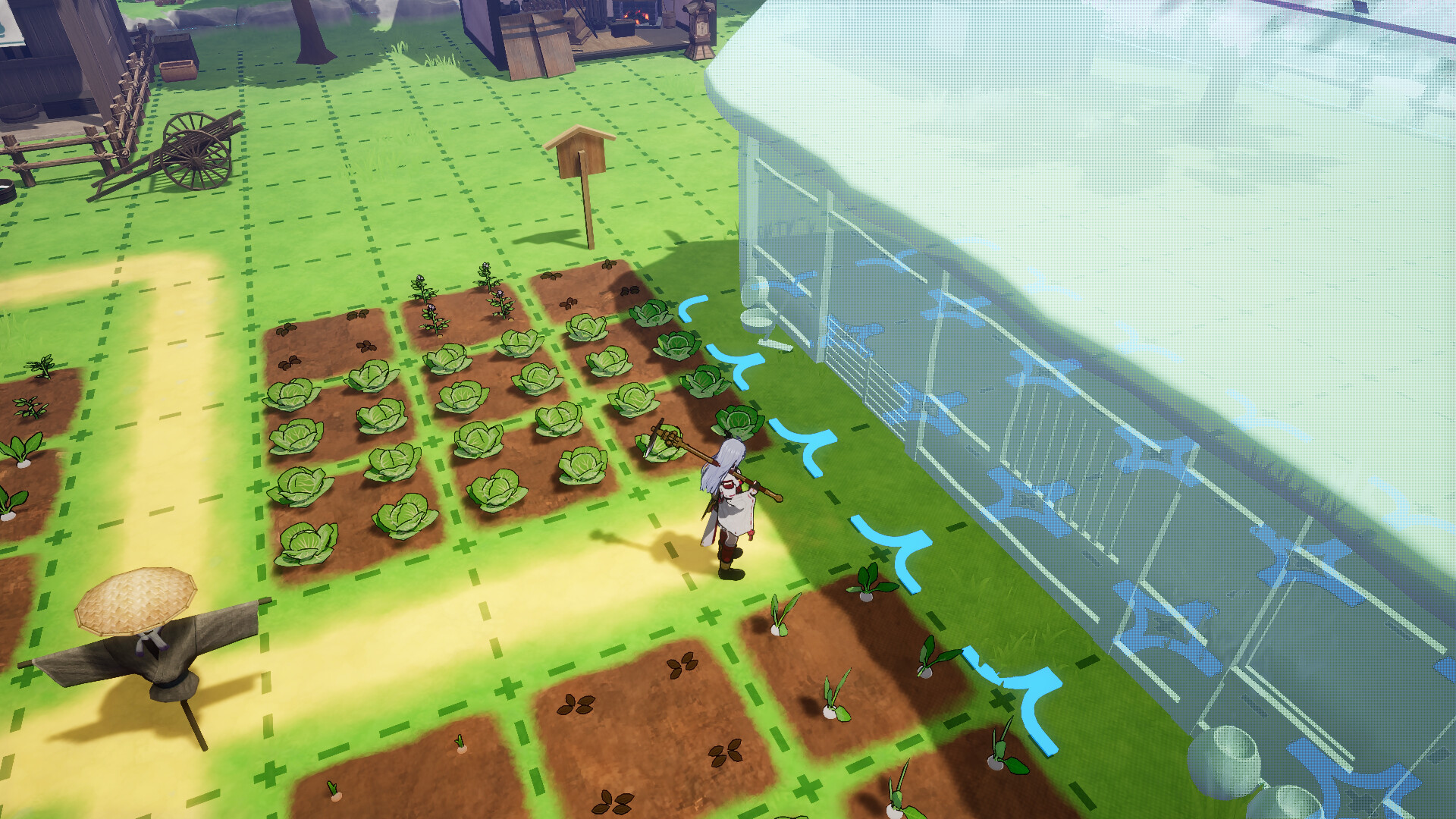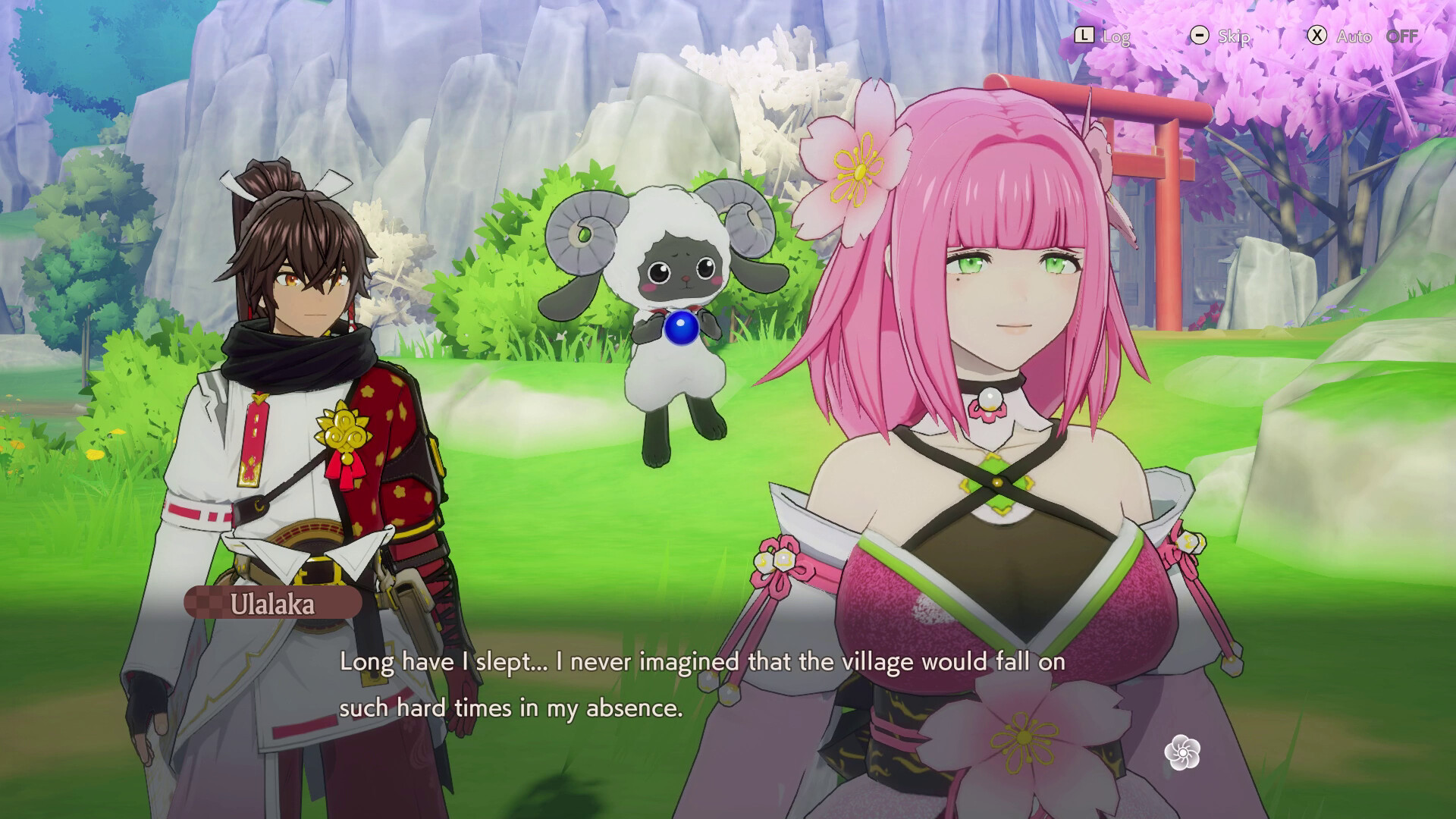
Getting started in a series like Rune Factory can be challenging due to its rich backstory and intricate gameplay mechanics. However, Guardians of Azuma is an ideal choice for beginners as it streamlines some farming and crafting aspects. Instead, it focuses more on action, exploration, and town-building, offering a more engaging experience for new players.
This installment distinguishes itself from previous games in the series by being set on an entirely new continent, distinct from the backdrops of its predecessors. Consequently, it’s designed to be accessible even to those unfamiliar with the lore. This structure allows the narrative to flow more smoothly and eliminates some challenges for first-time players.
In the opening scene, we find ourselves in a quaint village. It’s important to note that this is a classic JRPG setting. Our main character, who has lost their memory, must learn about the world bit by bit. After a short introduction, a dream figure appears – the deity of Spring. The storyline for our adventure soon unfolds: Utilizing our new abilities as the Earth Dancer, we are tasked with awakening the four seasonal gods and rejuvenating their powers. This is achieved by cultivating Cabbages. Once that’s underway, the game becomes a thrilling ride!

In this game, you’ll find yourself juggling tasks, dedicating some time to cultivating your farm, fostering relationships with your villagers who could potentially be romance options, venturing out for discoveries to gather new materials, recipes, and progress the central plot.
In this version of the game, the farming aspect has been made less complex compared to the main Rune Factory series. You no longer have to concern yourself with factors like soil type; instead, focus on watering your crops and being mindful of what seasons are optimal for their growth. Each of the four villages you open up in this game will remain in a permanent, unique season.
In this game, it’s important to note that you can’t exclusively dedicate all your available space for farming, because the areas suitable for planting crops are also where you establish your villages. Within these zones, you can construct a variety of buildings such as shops, cafes, and bathhouses, along with numerous decorative items to elevate the village level and boost your character’s stats.
As your settlements expand, you’ll gain access to additional recipes, more villagers, and new missions, all while improving either your character’s combat abilities or the productivity of your villages. This diversity includes enhancing the quantity of crops you gather, the ore you mine from deposits, and so forth. This system is incredibly gratifying, and with four distinct settlements to develop, you have ample opportunities to showcase your creative skills. Moreover, the game encourages you to strategically position similar items and buildings close together or along paths, as this not only optimizes mechanics but also results in aesthetically pleasing areas.

This ties perfectly with the adventurous aspect of the game. Each village is connected to expansive territories where you’ll encounter creatures, discover loot, and employ your abilities to purify the land of Corruption. Along the way, you’ll uncover new recipes for meals, decorations, equipment, and structures, which will enhance your capabilities in the field. This prevents the town-building process from becoming a passive system, as you’ll always return from an expedition with fresh items to incorporate, inspiring you to reconsider your designs.
In this type of game, I prefer to keep the battles simple rather than intricate. You’ll have several weapon options at your disposal, allowing you to carry two simultaneously. The primary gameplay involves repeatedly pressing the attack button and occasionally dodging. However, boss fights are more nuanced, as your attacks have minimal impact, instead focusing on filling a stun meter to make them vulnerable. Additionally, relics of the gods grant access to unique special moves, but that’s essentially it.
Although it may not be negative, keeping combat minimal in this game that’s essentially comfortable and relaxing is a wise choice to avoid overloading the player experience. Rather than demanding extreme challenges, embarking on an adventure here offers a refreshing change, emphasizing exploration over battles. Frequently, these adventures come with rewards such as story advancement, making each journey rewarding.
In combat, divine artifacts yield impressive results. However, they’re even more powerful when it comes to overcoming impediments in the world, such as removing Blight obstacles or serving as transportation devices, similar to a parasol functioning as a glider.
In any life-sim game I play, the heart of the experience lies in the array of potential love interests I can charm: the various bachelors and bachelorettes.

Instead of merely enhancing your town to draw in generic NPC villagers, each location boasts unique characters who engage in the surroundings. You have opportunities to interact with them daily, choosing from various activities that they show preferences and aversions towards. I find this interaction-based system more rewarding than simply showering them with endless gifts until they become fond of you.
Each character in the game has an opportunity to showcase their individuality through their unique storylines, allowing them to stand out. While these characters may follow typical JRPG character types, they each possess a distinct allure. Interestingly, unlike many life-simulation games, declaring your affection for someone doesn’t mark the end of the relationship; instead, it opens up the chance to delve deeper into their personalities once feelings have been expressed.
For instance, I began seeing the deity of Springtime, leading to an unusual plotline that acknowledged the complications inherent in dating someone who possesses eternal life and powers beyond our understanding. This perspective offers a fresh twist on the usual treatment of such relationships as unremarkable in games like this.
To give an example, I entered into a relationship with the deity of Spring, which resulted in an intriguing narrative that highlighted the challenges posed by dating someone who is immortal and has powers far beyond our grasp. This approach offers a unique twist on how such relationships are often portrayed as commonplace in games like this.
This feature allows you to explore various narratives guilt-free since you’ll eventually find a method to traverse parallel realities where you can maintain a monogamous relationship with different individuals. Although this isn’t groundbreaking given that you can date multiple people within the same reality with limited repercussions, it underscores the thoughtfulness poured into these personal stories, making them worthwhile to experience all of them.

The game shares some typical flaws found in farming simulation games. Despite the presence of vague villagers who can be invited to your village and perform tasks, they fall short when it comes to the crucial task of farming. To ensure the survival of everyone in your villages, you must generate a specific profit daily, primarily through farming. While the villagers can manage this task sufficiently for basic needs, their performance is disappointingly suboptimal compared to what you can achieve yourself, which can be frustrating.
Eventually, I found their interference with my layouts to be more of an inconvenience than anything else, prompting me to manage all four villages’ farms manually from scratch every day within the game. Granted, it doesn’t consume a significant amount of time, but performing this task at the start of each in-game day can become monotonous over time. I believe the gaming experience would be greatly enhanced if the game offered more control to guide NPCs on what crops they should plant where and which tasks they should prioritize to help me level up my village faster.
Indeed, Rune Factory: Guardians of Azuma remains among the top-tier life simulation games, offering an appealing blend between the village, its inhabitants, and the vast external world to discover. The town development aspects give a genuine sense of rejuvenating these areas into thriving communities, and it’s delightful getting acquainted with all the vibrant characters who call this place home. Couple that with accessible farming mechanics and a robust main storyline, and you’ve got an ideal starting point for newcomers to the Rune Factory series.
Read More
- Gold Rate Forecast
- Tom Cruise Bags Gold: Mission Impossible Star Lands Guinness World Record for Highest Burning Parachute Jumps
- Mobile MOBA Games Ranked 2025 – Options After the MLBB Ban
- Are Billie Eilish and Nat Wolff Dating? Duo Flames Romance Rumors With Sizzling Kiss in Italy
- Tom Hiddleston and Wife Zawe Ashton Announce Second Pregnancy, Know Couple’s Relationship Timeline
- Is Justin Bieber Tired of ‘Transactional Relationship’ with Wife Hailey Bieber? Singer Goes on Another Rant Raising Concerns
- Justin Bieber Tells People to ‘Point at My Flaws’ Going on Another Rant, Raises Alarm With Concerning Behavior
- Resident Evil 9: Requiem Announced: Release Date, Trailer, and New Heroine Revealed
- Summer Game Fest 2025 schedule and streams: all event start times
- Apothecary Diaries Ch.81: Maomao vs Shenmei!
2025-06-16 18:46